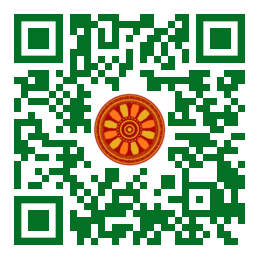
:: International Transaction Journal of Engineering, Management, & Applied Sciences & Technologies
http://TuEngr.com

ISSN 2228-9860
eISSN 1906-9642
CODEN: ITJEA8
FEATURE PEER-REVIEWED ARTICLE
Vol.13(13)(2022) |
The Effect of Different Designs of Fins and Nose Cones towards the Stability and Performance of a Sugar Rocket
 Ahmad Hussein Abdul Hamid,
Zuraidah Salleh
(School of Mechanical Engineering, College of Engineering, Universiti Teknologi MARA, Shah Alam 40450 Selangor, MALAYSIA),
Ahmad Hussein Abdul Hamid,
Zuraidah Salleh
(School of Mechanical Engineering, College of Engineering, Universiti Teknologi MARA, Shah Alam 40450 Selangor, MALAYSIA),
Mohamad Amirul Muhammad (School of Mechanical Engineering, College of Engineering, Universiti Teknologi MARA, Shah Alam 40450 Selangor, MALAYSIA),
(MTC Defence Sdn Bhd, High Energy Material Research Laboratory (HEMREL), Universiti Teknologi MARA, Shah Alam 40450 Selangor, MALAYSIA),
Khalkhalas Kamaludin (School of Mechanical Engineering, College of Engineering, Universiti Teknologi MARA, Shah Alam 40450 Selangor, MALAYSIA),
Mohammad Juani Sujana, Mohd Ismail Khamis ( MTC Defence Sdn Bhd, High Energy Material Research Laboratory (HEMREL), Universiti Teknologi MARA, Shah Alam 40450 Selangor, MALAYSIA).
Discipline: Aerospace Engineering, Aerodynamics, Computational Fluid Dynamics (CFD).
doi: 10.14456/ITJEMAST.2022.262
Keywords:Rocket fins; Rocket performance; Rocket stability; Open rocket; Rocket analysis; Airflow analysis; Sugar propellant; Potassium nitrate; Rocket design; Clipped delta fins
AbstractDue to the high demand for model rocket competitions, interest in model rocket design has steadily increased. However, there is a small amount of research done so far on making the design process simpler and considering the physics behind the design process. Hence, this research proposes to determine how the combination design of fins and nose cones affects the stability and performance of a sugar rocket and to determine the most optimized design of nose cones and fins of a sugar rocket in terms of its stability and performance. In this study, each nine model rockets with different combinations of nose cones and fin design were tested. Open Rocket software is used to determine the stability of a rocket and simulate the flight of a model rocket. The designs of the model rockets are created using the design software Catia. Ansys software is used to run airflow analysis as it can determine the streamline of a rocket as well as consider the wind velocity of the model rocket. Results show that a model rocket with an ellipsoid nose cone and triangular fins is the most stable model rocket while a model rocket with a conical nose cone and triangular fins flies the highest.Paper ID: 13A13J
Cite this article:
Abdul Hamid, A.H., Salleh, Z., Muhammad, M.A., Kamaludin, K., Sujana, M.J., and Khamis, M.A.(2022). The Effect of Different Designs of Fins and Nose Cones towards the Stability and Performance of a Sugar Rocket. International Transaction Journal of Engineering, Management, & Applied Sciences & Technologies, 13(13), 13A13J, 1-15. http://TUENGR.COM/V13/13A13J.pdf DOI: 10.14456/ITJEMAST.2022.262
References
- Aeronautics Astronautics, F. O. F. (2018). Istanbul technical university faculty of aeronautics and astronautics.
- El Shakankery, M. H., Kasem, M. H., & Al-Ebiary, M. E. (2017). Predicting air permeability of nylon parachute fabrics. International Design Journal, 7 (2), 235-240.
- Benson, T. (2014). Rocket Stability. National Aeronautics and Space Administration. https://www.grc.nasa.gov/www/k-12/rocket/rktstab.html
- Bragg, S. L. (1962). Rocket engines. Nature, 196 (4857), 912. https://doi.org/10.1038/196912b0
- Emrich, W. (2016). Rocket Engine Fundamentals. Principles of Nuclear Rocket Propulsion, 11-20. https://doi.org/10.1016/b978-0-12-804474-2.00002-3
- Federal Aviation Administration. (2016). Pilot's handbook of Aeronautical Knowledge: Aerodynamics of Flight. Cl.
- Hall, N. (2015a). Center of Gravity. National Aeronautics and Space Administration. https://www.grc.nasa.gov/www/k-12/airplane/cg.html
- Hall, N. (2015b). Center of Pressure. National Aeronautics and Space Administration. https://www.grc.nasa.gov/www/k-12/airplane/cp.html#:~:text=Taking the sum of the,produce the center of pressure.
- Huang, W., Li, B., Liang, H., & Chen, X. (2016). Dynamic Course Stability of Towing Systems using Fiber Robes. Moss, 978-981. https://doi.org/10.3850/978-981-11-0743-6
- Inc., A. C. (n.d.). Estes Motors - C5-3. Retrieved June 25, 2021, from https://www.apogeerockets.com/Rocket-Motors/Estes-Motors/18mm-Motors/Estes-Motors-C5-3
- Leslie, S., & Yawn, J. (2002). Proposal for the inclusion of KNO3/sugar propelants in TRA experimental rocetry program.
- Milligan, T. Van. (2017). What is the best fin shape for a model rocket?? Peak of Flight. https://www.apogeerockets.com/education/downloads/Newsletter442.pdf
- Nakka, R. (2001). Richard Nakka's Experimental Rocketry Site. Nakka Rocketry. http://www.nakka-rocketry.net/
- Ozen Engineering Inc. (n.d.). ANSYS Fluent. Retrieved June 18, 2021, from https://www.ozeninc.com/products/fluid-dynamics/ansys-fluent/
- Palekar, M. P. K. S. G. (2015). Design and Performance Analysis of Aluminized Sugar Aided Rocket Propulsion Using MATLAB. International Journal of Science and Research (IJSR), 4 (10), 624-627. https://www.ijsr.net/archive/v4i10/SUB158788.pdf
- Pektas, A., Haciabdullahoglu, U., Ejder, N., Demircan, Z., & Tola, C. (2019). Effects of different fin shapes on apogee and stability of model rockets. Proceedings of 9th International Conference on Recent Advances in Space Technologies, RAST 2019, June, 193-199. https://doi.org/10.1109/RAST.2019.8767439
- Rajan Iyer, A., & Pant, A. (2020). A review on nose cone designs for different flight regimes. International Research Journal of Engineering and Technology, 3546-3554. www.irjet.net
- Singh, D. A. (2013). Sugar Based Rocket Propulsion System- Making, Analysis & Limitations. International Journal of Engineering Trends and Applications, 2 (5), 30-37. www.ijetajournal.org
- Stine, G Harry and Stine, B. (2004). Handbook of Model Rocketry. 7th Edition (7th Edition). John Wiley and Sons.
Other issues:
Vol.13(12)(2022)
Vol.13(11)(2022)
Vol.13(10)(2022)
Archives
Call-for-Papers
Call-for-Scientific PapersCall-for-Research Papers: ITJEMAST invites you to submit high quality papers for full peer-review and possible publication in areas pertaining engineering, science, management and technology, especially interdisciplinary/cross-disciplinary/multidisciplinary subjects.
To publish your work in the next available issue, your manuscripts together with copyright transfer document signed by all authors can be submitted via email to Editor @ TuEngr.com (please see all detail from Instructions for Authors)
Publication and peer-reviewed process:
After the peer-review process, articles will be on-line published in the available next issue. However, the International Transaction Journal of Engineering, Management, & Applied Sciences & Technologies cannot guarantee the exact publication time as the process may take longer time, subject to peer-review approval and adjustment of the submitted articles.